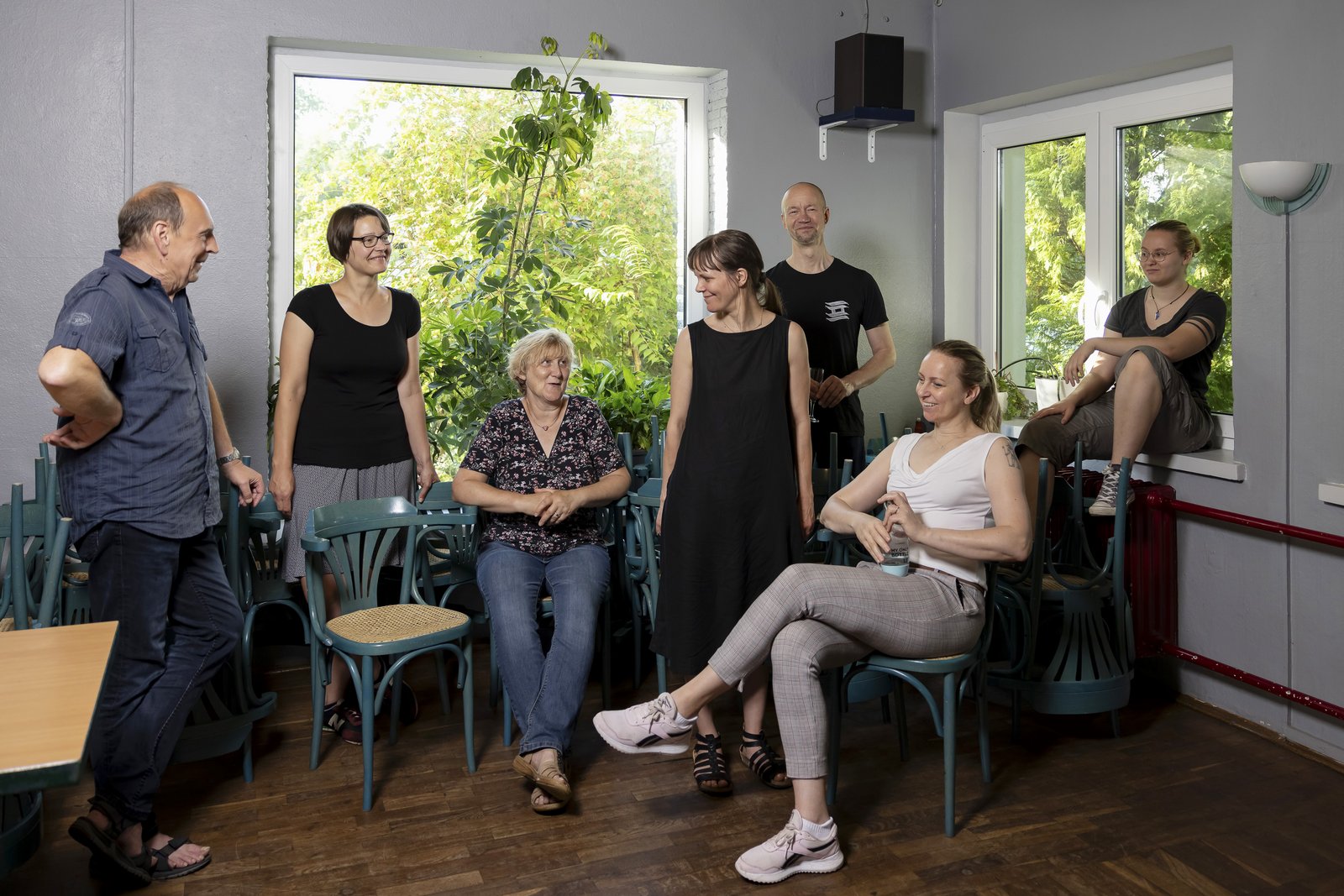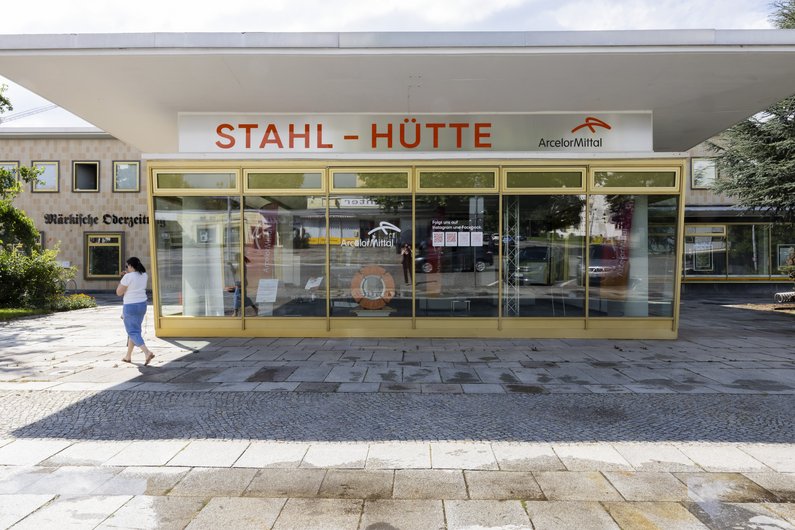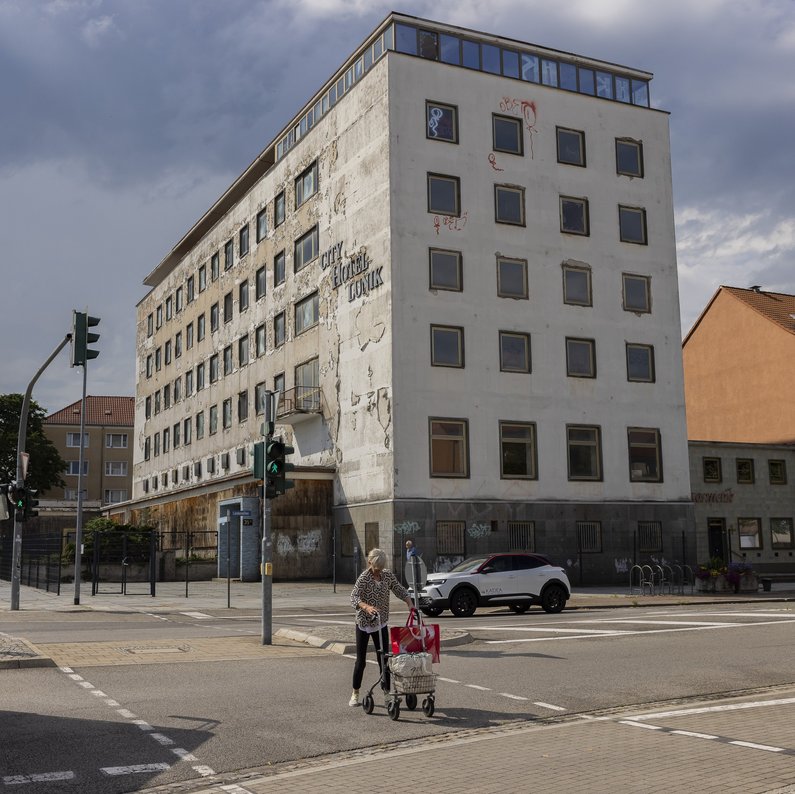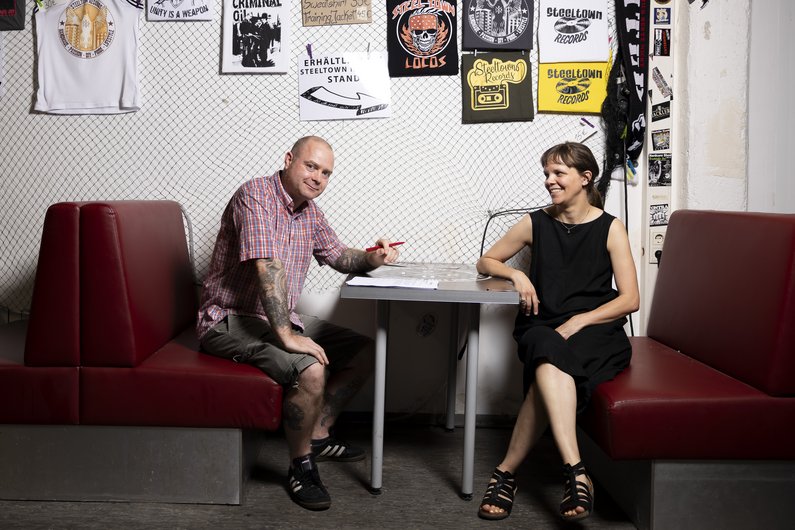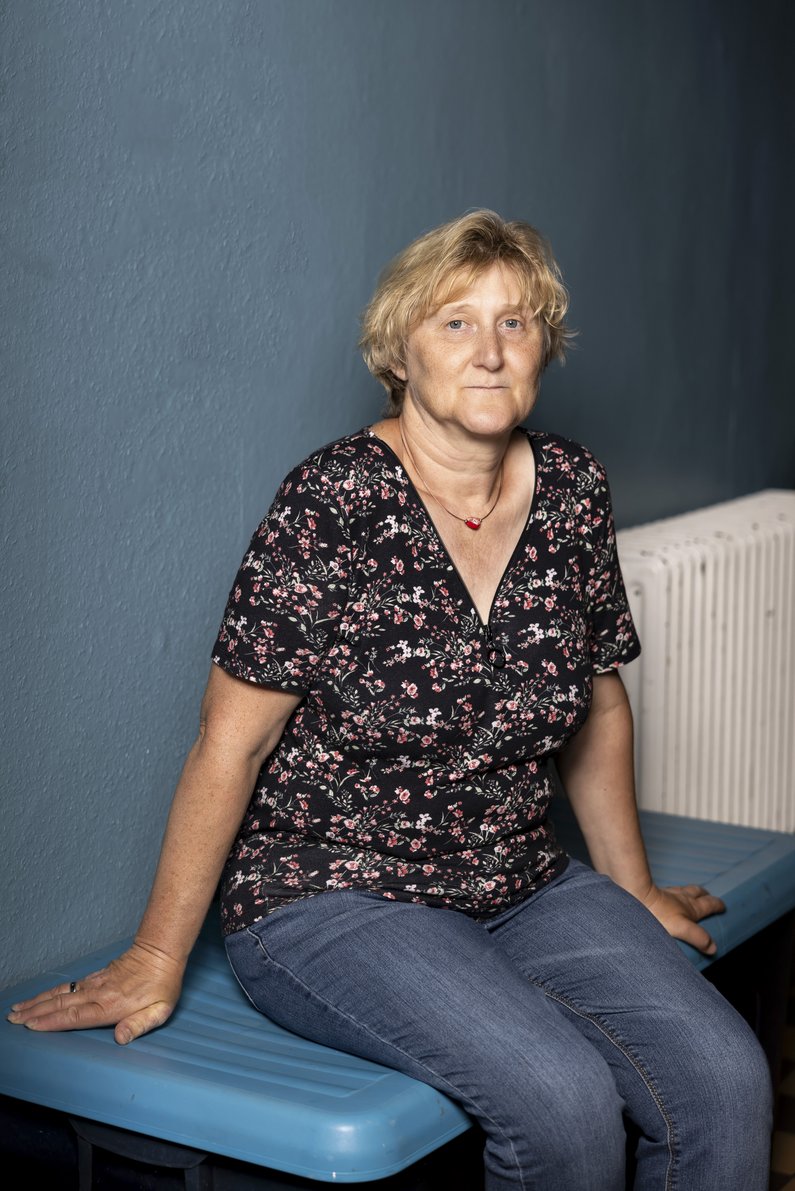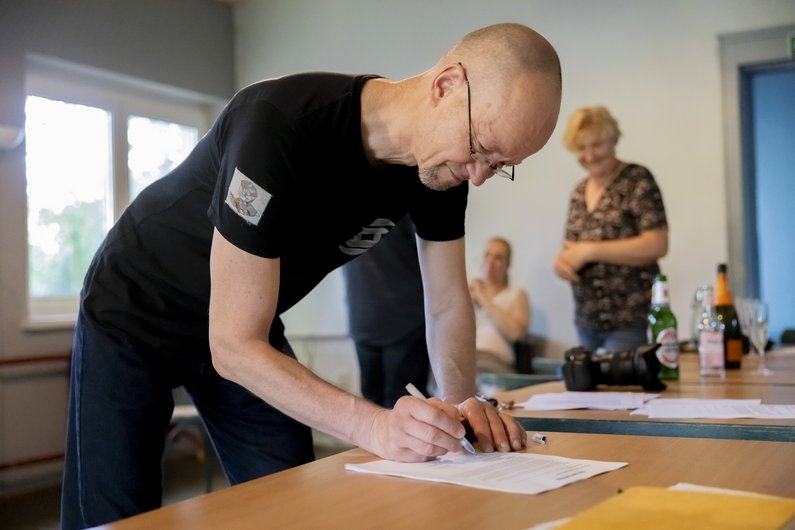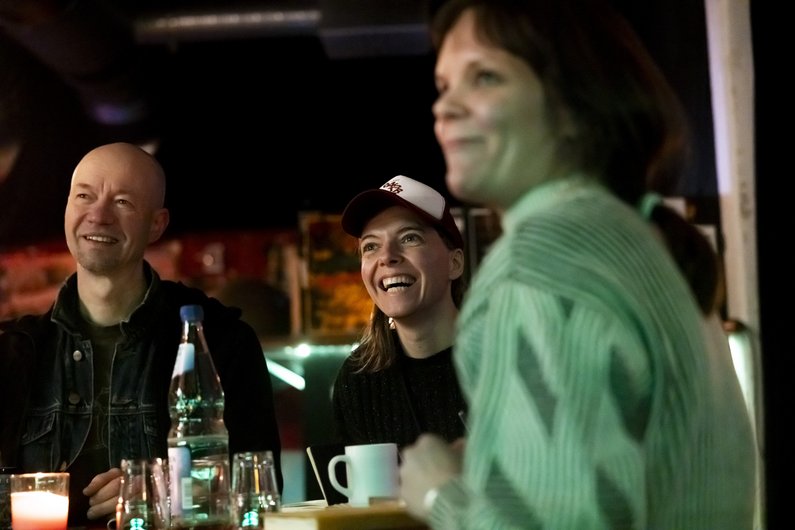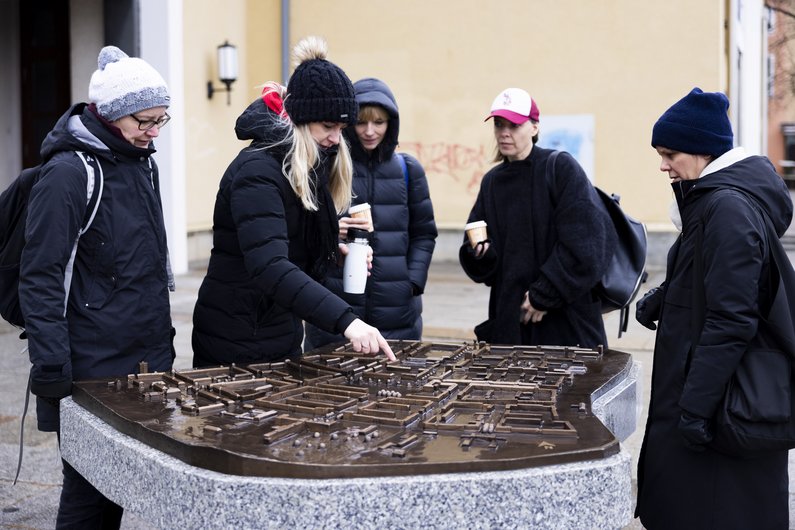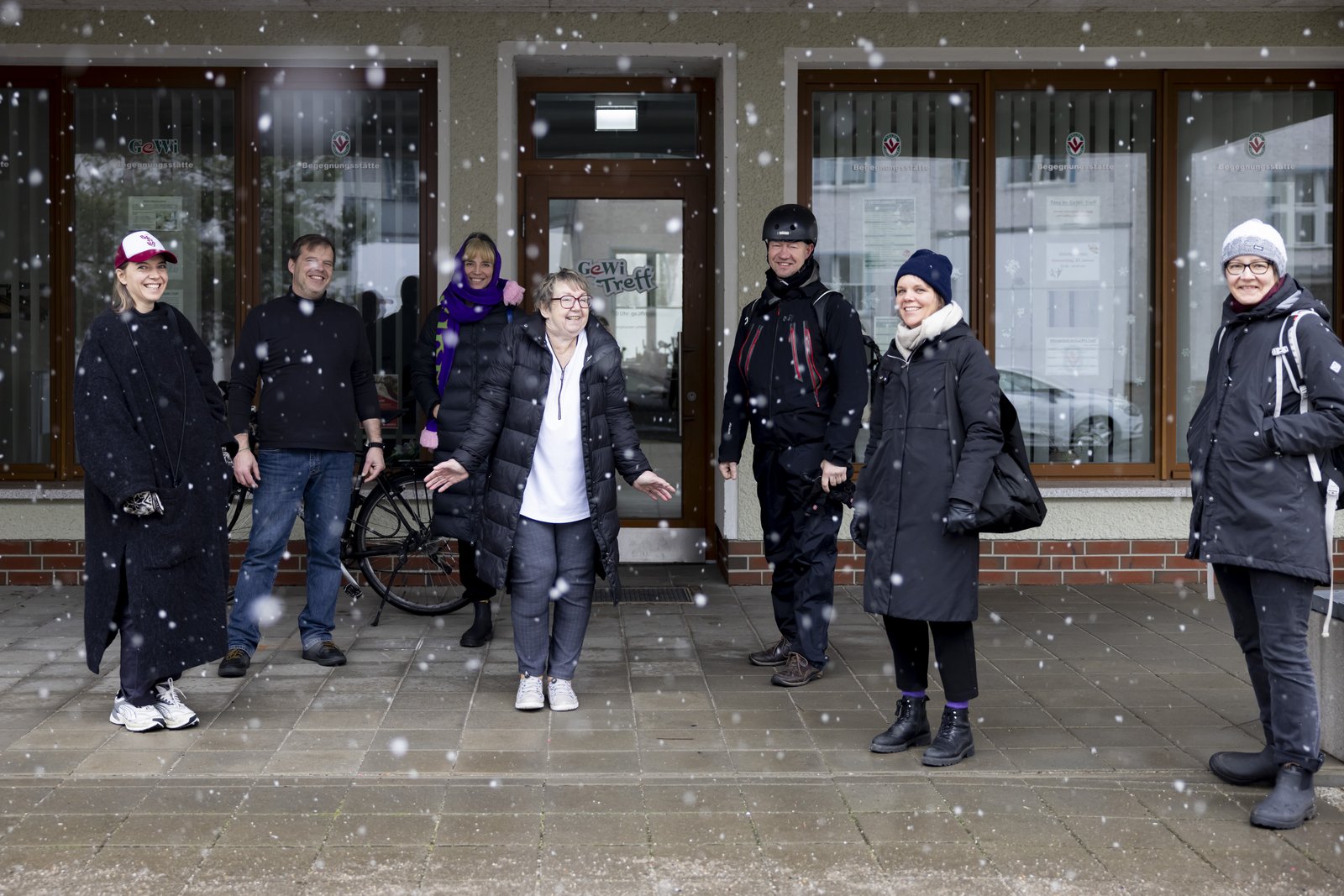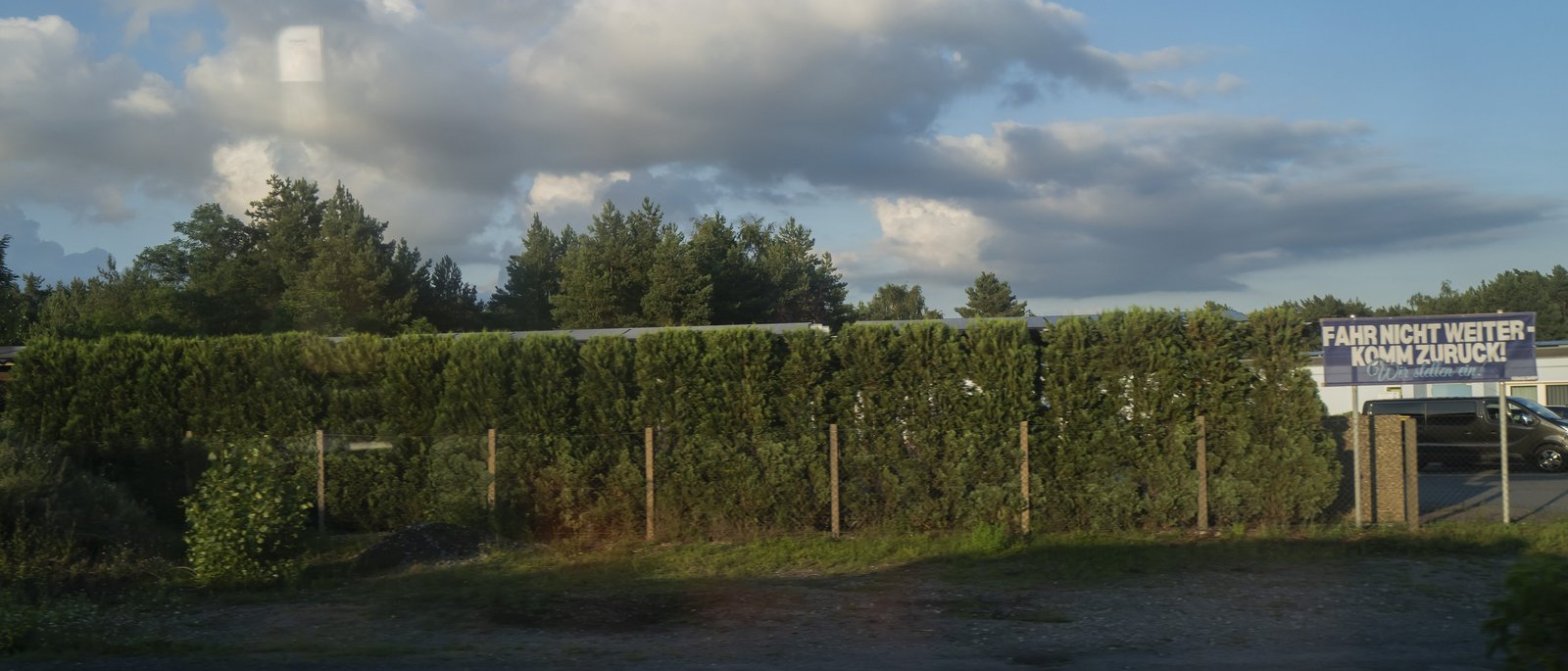Patrons: Heike Gunkel, Pedro Gunkel, Anne Krapp, Sven Quenzel, Al Titzki, Andrea Titzki, Thomas Zimmermann
Commission: We want a connecting element for the history and future of our city. This can be a new place, an occasion for gatherings, time spent together, or joint action.
Mediator: Lea Schleiffenbaum
Artist: Lina Lapelytė
Duration: 2024 ongoing
Program: Citizen-Commissioned Dance and Performance
Partners: Kulturstiftung des Bundes (German Federal Cultural Foundation)
Eisenhüttenstadt is a fascinating place—many visitors come for a day to admire the impressive architecture of this socialist model city and to immerse themselves in the history and aesthetics of the former GDR. Nostalgia thrives here. But Eisenhüttenstadt is more than a preserved monument. The New Patrons of Eisenhüttenstadt believe that for those who live here, daily life requires not just a look into the past but, above all, a bridge to the future—one that makes staying worthwhile.
“What good are all the symposia with people from outside if they then just leave again?”
From the commission
Eisenhüttenstadt was built in the early 1950s around the newly constructed Eisenhüttenkombinat Ost steelworks. The town was intended to meet all the demands of everyday working life and was a showcase urban development project for the GDR. The residential complexes offered a department store, kindergarten, school, supermarket, newspaper kiosk, cultural center or youth club and sports and leisure facilities. The layout and structure encouraged togetherness and easy accessibility.
Today, less than 25,000 people live in the city that was once planned for 100,000 inhabitants. Many of them have borne the brunt of the major changes brought about by the fall of communism and are once again confronted with the current crises and challenges. Some are tired of dealing with ever-increasing change and are withdrawing into their private lives. Others – people with ideas and visions for the city – are often confronted with a lack of understanding, disinterest or bureaucratic hurdles. Trust and the joy of opportunities to help shape the city are dwindling in a place that was once built with and by the hands of the population. Many residents share a feeling of the devaluation and musealization of past achievements with other people in East Germany.
The New Patrons of Eisenhüttenstadt aim to raise awareness of both the urban and human achievements that, in their view, have shaped the city. They seek to bring back into focus what was once well-conceived and well-utilized, in order to work across generations on visions for the future—so that their city can function and grow once again.
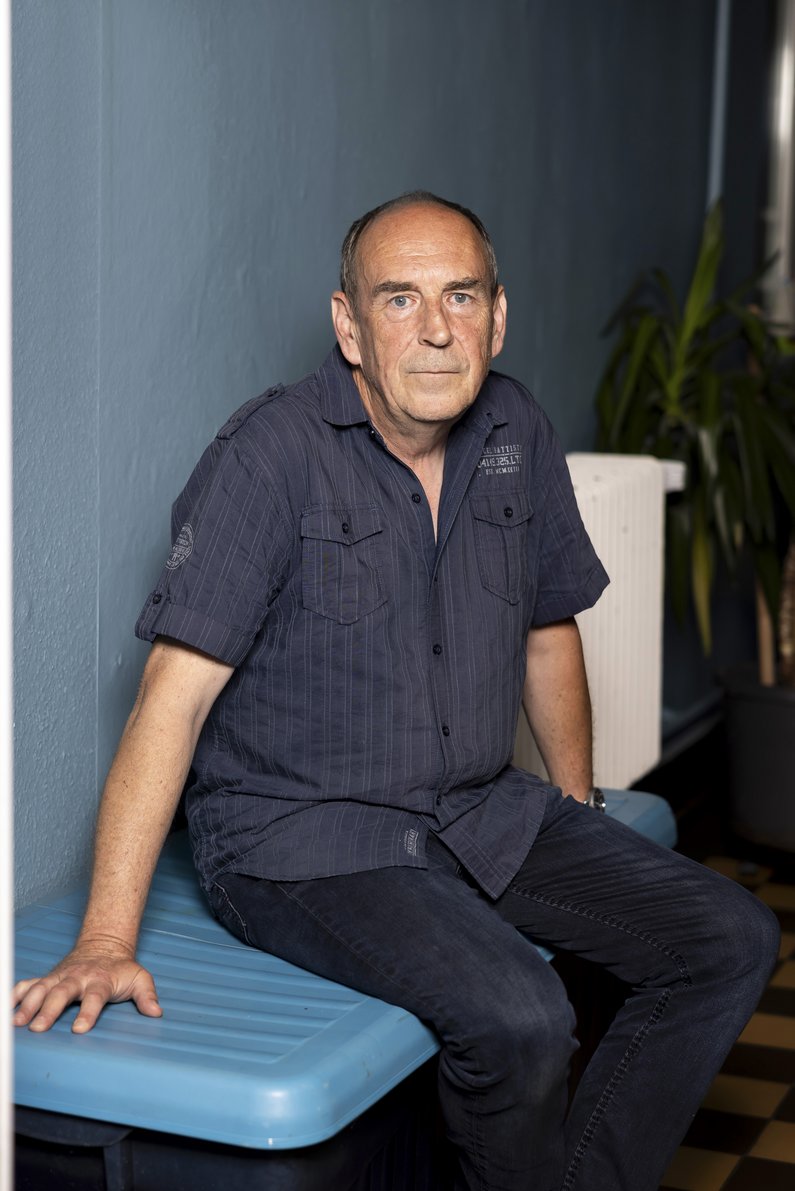
The New Patrons of Eisenhüttenstadt
Pedro Gunkel, patron Photo: Victoria Tomaschko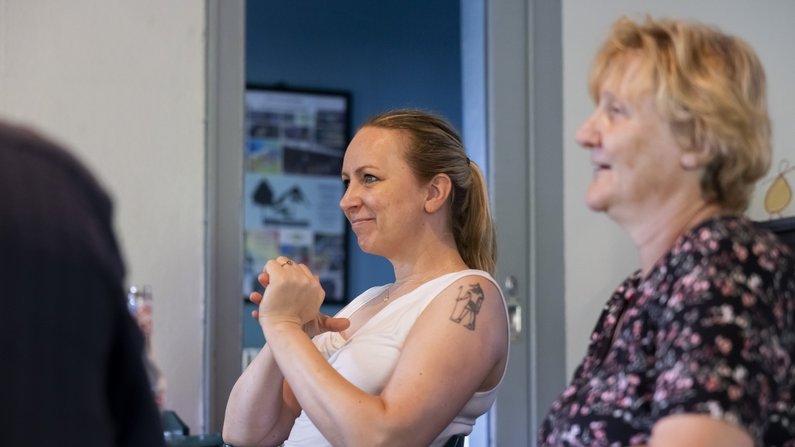
The New Patrons of Eisenhüttenstadt
New Patrons Andrea Titzki and Heike Gunkel Photo: Victoria Tomaschko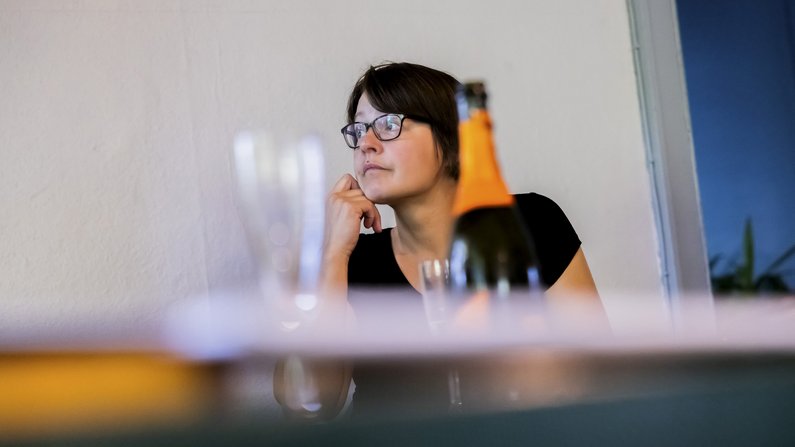
The New Patrons of Eisenhüttenstadt
Anne Krapp, Patron Photo: Victoria Tomaschko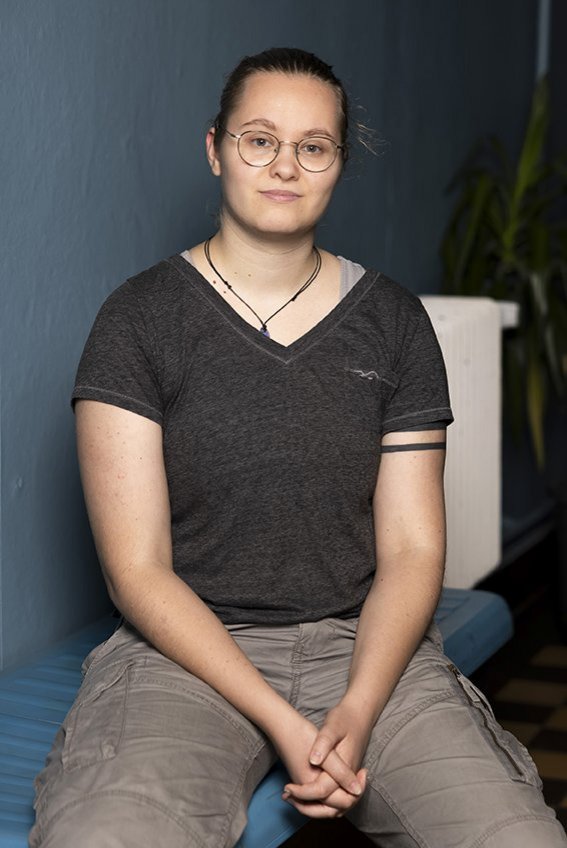
The New Patrons of Eisenhüttenstadt
Al Titzki, Patron Photo: Victoria TomaschkoMediator Lea Schleiffenbaum’s suggestion to commission artist Lina Lapelytė for the project quickly resonates with the group. After a personal meeting, the group decides to commission Lina Lapelytė—and the artist has now started her working with the group.
The internationally renowned artist, who lives in London and Vilnius, combines music and performance with social issues in her work. Her pieces often explore everyday life while also addressing nostalgia and the role of the individual within a community. She has a unique ability to translate complex themes into powerful, accessible experiences. Lina Lapelytė's works engage trained and untrained performers. Her works span a wide range of performative and musical genres. They are often centered around collective singing combined with intricate choreography and functional architecture, with location and site specificity playing an important role.
In 2019, Lina Lapelytė won the Golden Lion at the Biennale di Venezia for Sun & Sea (Marina). This opera about climate change and human responsibility, created in collaboration with Rugilė Barzdžiukaitė and Vaiva Grainytė, received international acclaim. Her works have been presented at prestigious institutions and festivals, including BAM – Brooklyn Academy of Music in New York, Bourse de Commerce – Pinault Collection in Paris, Haus der Kunst in Munich, Serpentine in London, Singapore International Festival of Arts, Baltic Triennial in Tallinn, Teatro Colón in Buenos Aires, MOCA – Museum of Contemporary Art in Los Angeles, and Wiener Festwochen.
Upcoming projects include, amongst others, a performance at Schirn Kunsthalle Frankfurt (March 2025), a solo show at The Cosmic House in London and a performance at TR Warszawa in Warsaw (both April 2025), an artist fellowship at The Watermill Center in New York (July/August 2025) and a contribution to Performa Biennial in New York (November 2025).
The patrons are less concerned with a lasting transformation of the city's exterior—they primarily want to inspire change within the people who live there, in their perceptions and experiences. New places could emerge, new occasions for gatherings or shared time, new forms of collective action. The hope is that Lina Lapelytė will bring fresh impulses to Eisenhüttenstadt and strengthen the connection between art, community, and regional culture.
The former ambition of an "ideal city" once created false expectations in Eisenhüttenstadt. What the New Patrons of Eisenhüttenstadt strive for instead is a vibrant, real city—without nostalgic sentimentality, but with deep respect for what makes this place unique.
